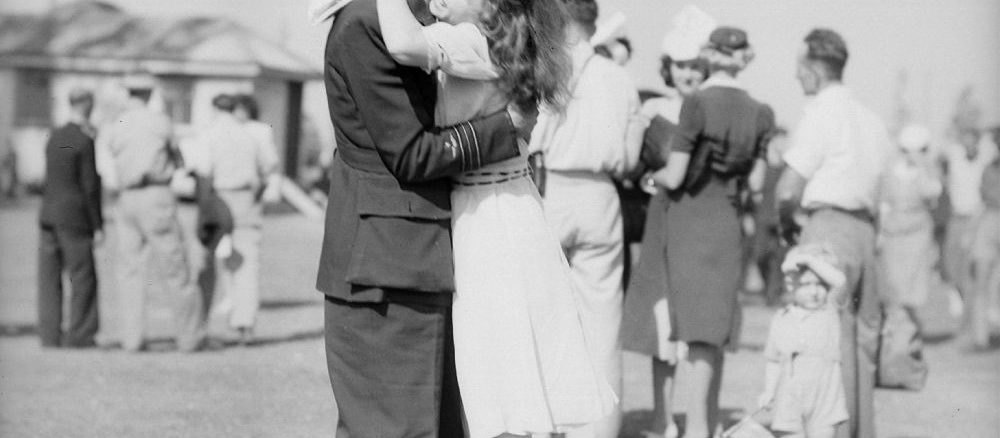
Nine days after the first Atomic Bomb was dropped on the Japanese city of Hiroshima instantly killing an estimated 100,000, Emperor Hirohito, in a pre-recorded message, called on all his forces to surrender.
It was August 15, 1945, and following Germany’s surrender a few months earlier, the capitulation brought to an end six years of world war and all the horror, death and deprivation it contained.
It is estimated as many as 75 million died in WW11.
The announcement of the Japanese surrender triggered wild celebrations around Australia with August 15 forever after being known as VP (Victory in the Pacific) Day.
VP Day this year is on Saturday.
Last year, the 75th anniversary of VP Day was marked by a special display at Anzac Square Memorial Galleries looking back on the years of commemorations, cavalcades and camaraderie that underpin the Queensland war experience and those who bravely served our nation. (See details attached).
Because of its northern geographical position, Queensland and Brisbane took centre stage from the moment America (and her allies) were plunged into war with Japan on the morning of Sunday, December 8 (still December 7 in Washington, US).
In a surprise attack, waves of carrier-borne Japanese torpedo, bomber and fighter planes, piloted by Japan’s elite who had been practicing in secret for months, pounced on the US Pacific fleet at Pearl Harbour, Hawaii.
It was a turkey shoot. Within minutes the battleship US Oklahoma was torpedoed and rolled over, trapping and killing 400 sailors. More battleships also were sunk or beached, 188 planes destroyed and 2,225 servicemen killed.
US President Franklin D Roosevelt told Congress the next day that December 8 was “a date which will live in infamy”.
For Australia it was the start of years of sacrifice, suffering, death and dislocation marked at the start by a real fear of invasion.
There would be countless Australians (men and women) who would answer their nation’s call putting their lives and future on the line over the next four years, including:
- Prime Minister John Curtin, regarded as one of Australia’s best, who served as Australia’s 14th Prime Minister until his death in 1945 including all but the last few weeks of the war in the Pacific. He suffered ill health in the dying stages of the war but ignored doctors’ advice to rest.
Recognising early that Australia was ill-prepared for war at home, Curtin single-mindedly battled British Prime Minister Winston Churchill to bring home seasoned Australian troops (the 7th Division) from the Middle East to defend Australia from Japan which was preparing to invade. He succeeded on getting our troops home and went on to cement Australia’s bond with the US as at first the Allies struggled and later as they got on top of Japan.
- The Australians involved in the battle of Singapore in February 1942 as Japan swept down the Malay Peninsula. Many Australians were killed and more than 15,000 captured 7000 of whom died as prisoners of war.
- The bombing of Darwin, the most devastating attack being on February 19,1942, which killed more than 200 people. It was the first and largest of more than 100 Japanese air raids against Australia in 1942 and1943.
- Australian sailors on Australian ships who took part in the Battle of the Coral Sea between May 4 and 8, 1942, in the ocean between Australia, New Guinea and the Solomon Islands, which led to Japan calling off its proposed seaborne invasion of Port Moresby, a few miles north of Australia. Japanese sea power would be further battered in the sea battle of Midway a month later.
- The young, and in many cases inexperienced Australian soldiers, thrown into stopping (successfully) the subsequent land invasion by Japan of New Guinea on the infamous Kakoda Track between July and November 1942. More than 600 of our young soldiers died and 1,600 wounded, with a further 4000 claimed by illness.
- The ongoing island-to-island battles fought by Australian sailors, soldiers and nurses etc throughout the war zone as the Allies slowly pushed the fanatical Japanese back. In May,1943, the Australian Hospital Ship Centaur was attacked and sunk by a Japanese submarine off the cost of Queensland killing 268 of the 332 medical personnel and civilians crew on board.
- The dislocation and sorrow throughout Australia as families said goodbye to their sons and daughters needed to fight. Many never to be seen and hugged again.
- While not as heavy as in the UK, rationing was enforced in Australia by the use of coupons and was limited to clothing, tea, sugar, butter and meat.
The sacrifices made by ordinary Australians who pulled together to defend their homeland during WW11 were legendary and fittingly sit proudly side-by-side with men and women of earlier generations, like the original ANZACS, who answered the call.
SheSociety is a site for the women of Australia to share our stories, our experiences, shared learnings and opportunities to connect.

Leave a Reply